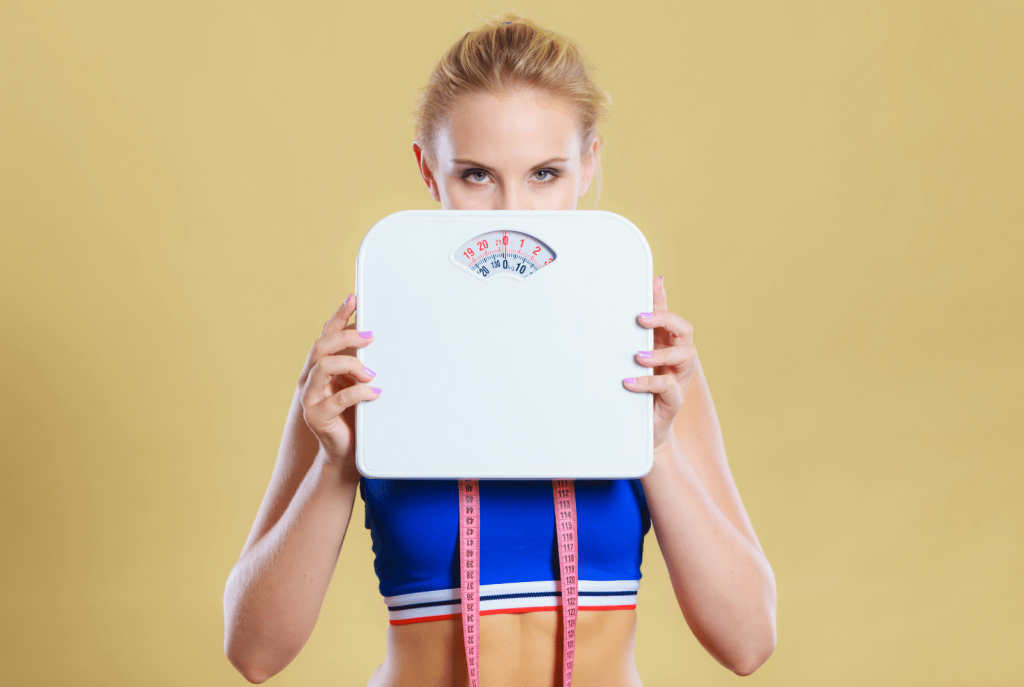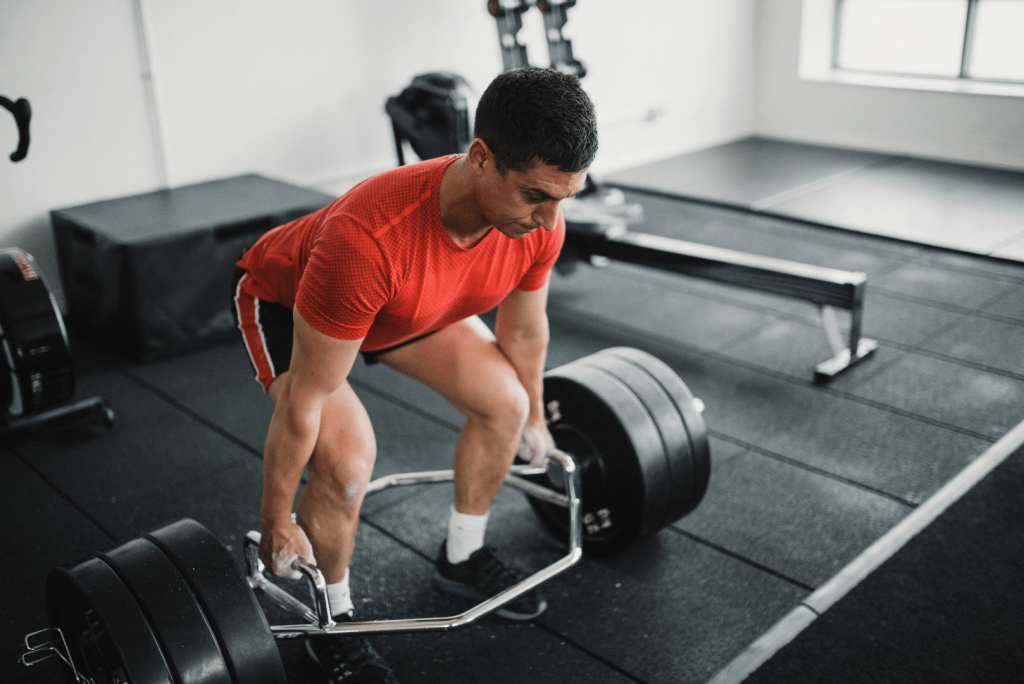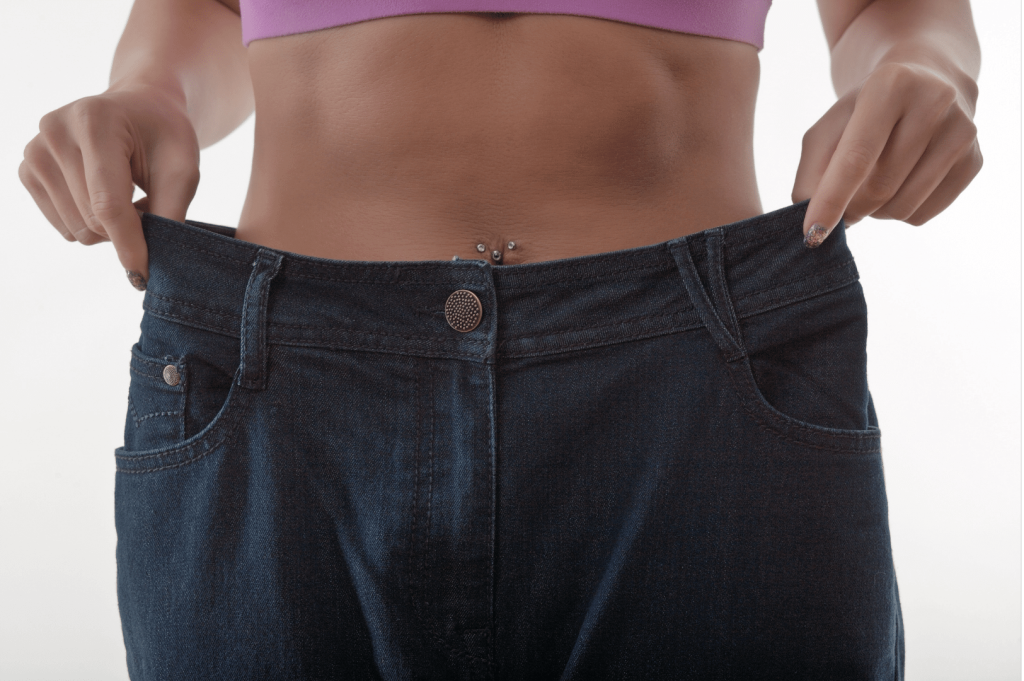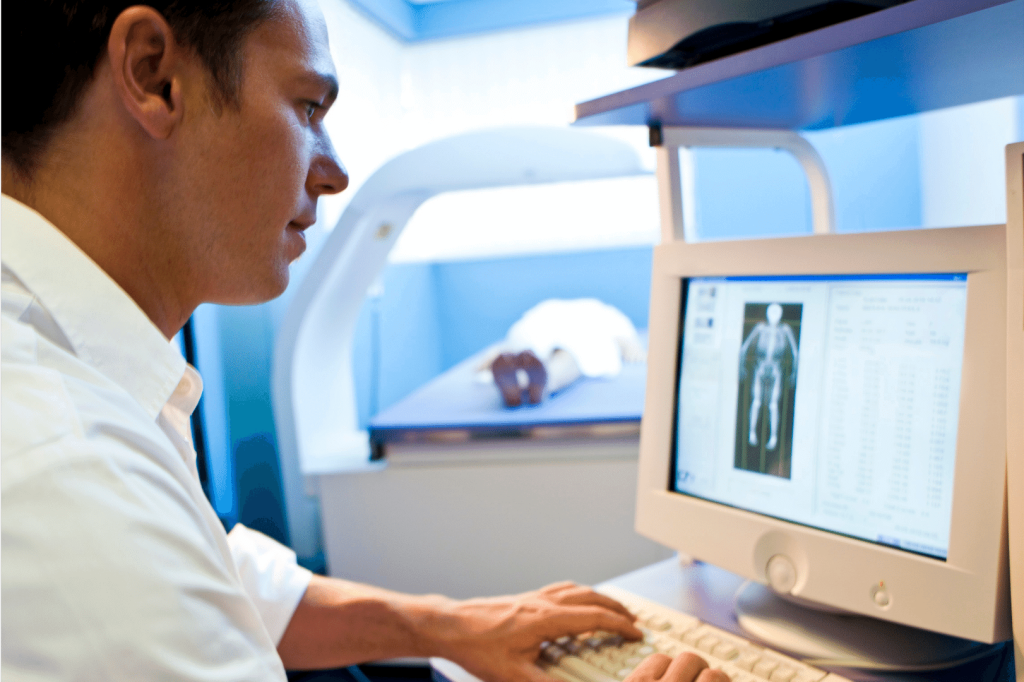
5 Ways To Know If You’re Losing Fat


5 Ways To Know If You’re Losing Fat
Overview
Some people quit altogether or even binge once they see their weight go up.
The truth is that scale weight is typically not a good way to measure progress for many reasons. You could be making great progress while your weight goes up.
This article will cover how to avoid the pitfalls, and what to measure instead.
Tracking Your Weight
Tracking your weight using the scale is the most common method out there. While the scale provides you with some information, it doesn’t have the ability to distinguish fat loss from muscle loss.
For this reason, relying on the scale alone may give you misleading input about your weight. Ideally, you should track your body composition, which tells you your percentage of body fat and lean mass, which includes muscles.
This way, you can reliably monitor whether you’re losing weight in fat or muscle.
Let’s consider this example: Person X adopts a fitness program with a caloric deficit diet.
After weighing themselves on a scale every day for a few weeks, they notice that their weight is not dropping. In fact, it increases on some days.
At the same time, person X is starting to look thinner. What’s going on here?
The explanation is simple – Person X is losing body fat but gaining muscle mass at the same time. This doesn’t move the number on the scale down; however, you will be getting healthier and leaner.

Reasons You Can Gain Weight, But Not Gain Fat
There are several reasons you might be gaining weight without gaining fat. If you notice weight gain, it is crucial to reflect back on what you have been eating and doing the previous days.
Water Retention
When water builds up in the body, it causes bloating and puffiness in the legs, arms, and abdomen. Over the course of 24 hours, water levels fluctuate in your body, adding or subtracting 2-4 pounds. There are several factors that can contribute to changes in water weight.
If you’ve been eating a low-carb diet and then have a high-carb meal, you will gain glycogen and water weight rapidly. The same thing can happen after eating out, as restaurants tend to add much more salt to their foods compared to home-cooked foods. The salt intake can increase water retention.
Another reason for fluctuating water weight is the menstrual cycle. For women, water retention peaks during the first day of menstrual flow. This is important to consider if you’re a premenopausal woman and weigh yourself every day.
Similar to how easily water weight can be put on, you can also lose water weight very rapidly. Many dieters lose 5 – 10 lbs, or even up to 10% of their body weight, over the first week or two, as this is mainly water weight. After this has settled, your weight loss will not be as drastic.
A Full Stomach
Weighing yourself after a copious meal can trick you into believing you’re gaining weight.
While the average meal weighs around 150-200 grams, consuming multiple meals per day in large quantities can make it seem like you’ve gained weight.
Another possible reason for false weight gain is constipation. When your digestive system is unable to remove stool from the body, all the extra weight will affect the scale reading.
Post-Exertional Inflammation
Exercise causes microtears in the muscles, so they retain water, giving you that post-workout “pump” we’re accustomed to seeing.
The short-term inflammation caused by exercise can affect the number on the scale.
With that said, this effect is generally mild and temporary.
Gaining Muscle Mass
When adopting a strength training program, you can gain muscle mass and lose body fat simultaneously, especially if you’re a beginner. Make sure to include more protein in your diet to avoid muscle breakdown.
Because muscle mass is denser than fat, your weight may not budge or even go up a little. Gaining muscles is a great thing because it improves your metabolism and makes you look better.
However, when using a measuring tape, skinfold calipers, or a DEXA scan, you will certainly find differences.

Better Ways To Know If You’re Making Progress
Now that you’ve learned that the scale is not the best measure of progress let’s cover a few better ways to track your progress.
1. Before And After Pictures
Taking pictures of your progress is a simple yet effective way to track fat loss and body change.
Here are some tips to make the photo shoot as accurate as possible:
- Start by taking photos in the morning every day after using the bathroom and before eating.
- Choose an uncluttered area to take your pictures (e.g., in front of a wall or door).
- The pictures are more informative for men when you take off your shirt and wear shorts. As for the ladies, a sports bra with shorts should do it. You could also wear a bikini.
- Select portrait mode to take the picture, not landscape. It should cover your body from head to toe.
- You need at least three views – Front, side, and back.
- If you have a partner to take the pictures for you, that is ideal. If not, use the timer option on your phone – 10 seconds should be enough to get ready.
- Look straight ahead and avoid sucking your gut. If you’d like, you can take a separate flexing shot for social media but not for fat loss progress tracking purposes.
2. Clothing Fit
While this one may seem obvious, it can be a great way to track fat loss. Just see how your clothes fit.
Initially, put on a clothing item (e.g., pants) that is slightly tight. Every 4 weeks, repeat this process and monitor for changes in the fit.
To increase the accuracy of this method, write down where the clothing feels tight and loose.
Combining this method with a photo shoot can give you a reliable measurement of your progress. However, it is not quantifiable.
In other words, you can tell you’ve lost some fat but won’t be able to say how much.
3. Measurement Tape
Waist size is a good indicator of cardiovascular and metabolic health.
One study monitored 430 individuals between the ages of 38-59 for 24 months while they adopted a weight loss program.
The shrinkage of their waist coincided with a drop in the risk of high blood pressure, hyperglycemia, and dyslipidemia.
Additionally, the American Heart Association lists excessive belly (visceral) fat as a major cardiovascular risk factor.
As you can see, measuring circumferences at multiple locations on your body (e.g., waist, thighs, arms) can roughly track fat loss even if the scale isn’t moving. Also, the waist-to-hip ratio strongly predicts cardiovascular risk factors and all-cause mortality, especially in older adults.
Regardless of whether the number on the scale is going up or down, a smaller waist size compared to the baseline is good news.

4. Skinfold Calipers
Skinfold calipers are also a great way to measure body fat percentage.
To start using calipers, here is what you need:
- Skinfold calipers with a spring
- A qualified fitness or health professional to help you with the measurement. Alternatively, a friend or family member can also take measurements for you. Don’t do the pinching yourself.
- A pen to mark the sites of measurement
- Anything to track your results (e.g., a journal, smartphone)
- A calculator to gauge the medians
When you have these items ready, it’s time to pinch and pull. To increase the accuracy of your measurements, follow these tips:
- Preferably, start with a 7-fold caliper test with 7 locations.
- Pinch your skin to take 3 measurements at each location to get a median that you will use later.
- Before measurement, mark the location with a letter of your choice. This will allow you to get a consistent reading each time.
- Avoid pinching too hard. You may end up disrupting the accuracy of the test.
- The unit of measurement is the millimeter. This is a small unit, so hard pinching can create biased outcomes.
- To increase the accuracy of your tests, try your best to create the same circumstances when taking measurements. Ideally, use the calipers in a fasted state on the same side of the body.
- If you have a friend or family member helping you, stick with the person. Changing the person may mess up your results.
5. DEXA Scan
A dual-energy X-ray absorptiometry (DEXA) scan uses low-radiation X-rays to measure your body composition accurately. This includes muscle mass, body fat, and bone density.
DEXA scans give you a full body image, allowing you to choose which areas to focus on more.
Of course, targeted lipolysis (i.e., burning fat) for a specific body part is impossible. Therefore, DEXA scans help you decide which muscles you need to strengthen.
Compared to other methods on our list, a DEXA scan is the most accurate. Even compared to body fat scales, DEXA scans excel. The only more effective method is hydrostatic weighing, which tends to only be available in research labs.
Avoid comparing two separate methods to track your progress, as none of the above methods are 100% accurate. However, with the same method, you can tell if you’re dropping body fat and possibly gaining muscles.

Frequently Asked Questions (FAQs) About DEXA Scans
Should I worry about the radiation of DEXA scans?
The radiation used by a DEXA scan is very low. You are exposed to more radiation during a 5-hour flight than undergoing a DEXA scan.
How much do DEXA scans cost?
Generally, a single DEXA scan costs between $50 and $150. This number varies greatly depending on your country, where you get the scan (public or private), and whether there are any package offers.
The best way to benefit from the DEXA technology is by scheduling scans regularly (every month or every 2 weeks at most). This will allow you to compare and track your progress.
How long does it take?
Each DEXA scan session takes around 30 minutes. While the scan only lasts a few minutes, the duration accounts for preparing your data and explaining the results.
Conclusion
Tracking your weight loss can be tricky, especially when you rely on the scale alone. Body composition matters for your health and appearance, not the number on the scale. If you’ve been working hard on your physique, seeing the number increase or not seeing a change can be discouraging.
You can track your progress better with many other methods, with the DEXA scan being the best choice.A qualified coach can tell you if the scale is lying. They’ll also keep you on track and help you dodge many pitfalls that can throw you off.
References
- Yorkin M, Spaccarotella K, Martin-Biggers J, Quick V, Byrd-Bredbenner C. Accuracy and consistency of weights provided by home bathroom scales. BMC Public Health. 2013;13(1):1194. doi:10.1186/1471-2458-13-1194
- Turicchi J, O’Driscoll R, Horgan G, et al. Weekly, seasonal and holiday body weight fluctuation patterns among individuals engaged in a European multi-centre behavioural weight loss maintenance intervention. PLoS One. 2020;15(4):e0232152. doi:10.1371/journal.pone.0232152
- Healthy diet. Who.int. Accessed September 27, 2022. https://www.who.int/news-room/fact-sheets/detail/healthy-diet
- Harty PS, Cottet ML, Malloy JK, Kerksick CM. Nutritional and supplementation strategies to prevent and attenuate exercise-induced muscle damage: A brief review. Sports Med Open. 2019;5(1):1. doi:10.1186/s40798-018-0176-6
- Cava E, Yeat NC, Mittendorfer B. Preserving Healthy Muscle during Weight Loss. Adv Nutr. 2017;8(3):511-519. doi:10.3945/an.116.014506
- de Groot J. Muscle density vs Fat: how it affects your weight. Tanita Europe Accessed September 27, 2022. https://tanita.eu/blog/muscle-density-vs-fat
- Ross R, Neeland IJ, Yamashita S, et al. Waist circumference as a vital sign in clinical practice: a Consensus Statement from the IAS and ICCR Working Group on Visceral Obesity. Nat Rev Endocrinol. 2020;16(3):177-189. doi:10.1038/s41574-019-0310-7
- Rothberg AE, McEwen LN, Kraftson AT, et al. Impact of weight loss on waist circumference and the components of the metabolic syndrome. BMJ Open Diabetes Res Care. 2017;5(1):e000341. doi:10.1136/bmjdrc-2016-000341
- Waist size predicts heart attacks better than BMI, especially in women. www.heart.org. Accessed September 27, 2022. https://www.heart.org/en/news/2019/03/19/waist-size-predicts-heart-attacks-better-than-bmi-especially-in-women
- Srikanthan P, Seeman TE, Karlamangla AS. Waist-hip-ratio as a predictor of all-cause mortality in high-functioning older adults. Ann Epidemiol. 2009;19(10):724-731. doi:10.1016/j.annepidem.2009.05.003
- Beam JR, Szymanski DJ. Validity of 2 skinfold calipers in estimating percent body fat of college-aged men and women. J Strength Cond Res. 2010;24(12):3448-3456. doi:10.1519/JSC.0b013e3181bde1fe
- Ponti F, Plazzi A, Guglielmi G, Marchesini G, Bazzocchi A. Body composition, dual-energy X-ray absorptiometry and obesity: the paradigm of fat (re)distribution. BJR Case Rep. 2019;5(3):20170078. doi:10.1259/bjrcr.20170078
- Bone density scan (DEXA scan). nhs.uk. Accessed September 27, 2022. https://www.nhs.uk/conditions/dexa-scan/
